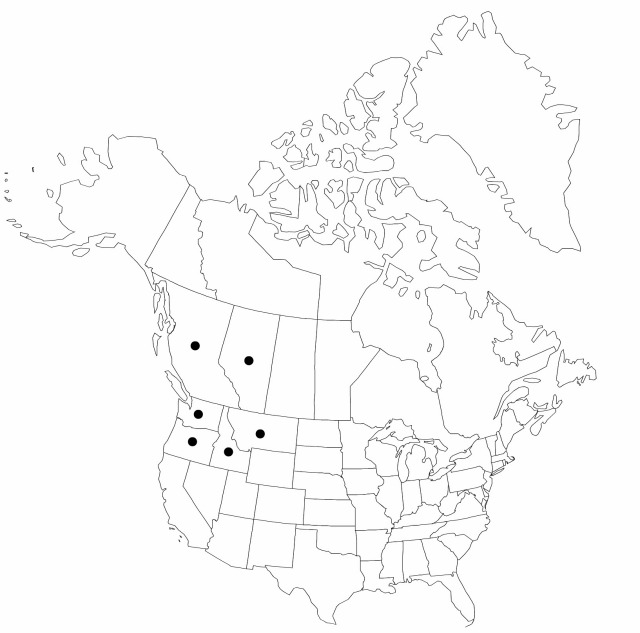Carex aperta
in W. J. Hooker, Fl. Bor-Amer. 2: 218, plate 219. 1839.
Plants not cespitose. Culms acutely angled, 15–90 cm, scabrous. Leaves: basal sheaths redbrown; sheaths of proximal leaves with blades, backs glabrous, fronts with pale-brown spots, veinless, glabrous, apex U-shaped, membranous, colorless; blades 3–6 mm wide. Inflorescences: proximal bract subequal to inflorescence, 2–4 mm wide. Spikes: erect; proximal 2–3 spikes pistillate, 1.5–3.5 cm × 4–6 mm, base obtuse; terminal 1–2 spikes staminate. Pistillate scales redbrown, longer than perigynia, apex acute or acuminate, awnless. Perigynia divergent, olive-brown with redbrown spots on apical 1/2, veinless, inflated, loosely enclosing achenes, obovoid, 2.5–2.8 × 1.5–2 mm, dull, apex rounded, papillose; beak green, 0.1–0.3 mm. Achenes not constricted, dull. 2n = 54.
Phenology: Fruiting Jul–Aug.
Habitat: Wet meadows
Elevation: 0–900 m
Distribution

Alta., B.C., Idaho, Mont., Oreg., Wash.
Discussion
Carex aperta and C. haydenii appear to be a very closely related, allopatric pair of species that may not be closely related to other members of the section. This species-pair is distinguished by the inflated perigynia, the acute scales that are longer than the perigynia, and the unique chromosome number. Carex aperta is distinguished from C. haydenii by its rhizomatous habit, the dull brown achenes, and the entire beak. It is sometimes mistaken for the sympatric taxa that also lack veins on the perigynia, C. aquatilis and C. scopulorum; mature specimens can easily be identified by the inflated perigynia.
Selected References
None.
Lower Taxa
"shortened" is not a number.
